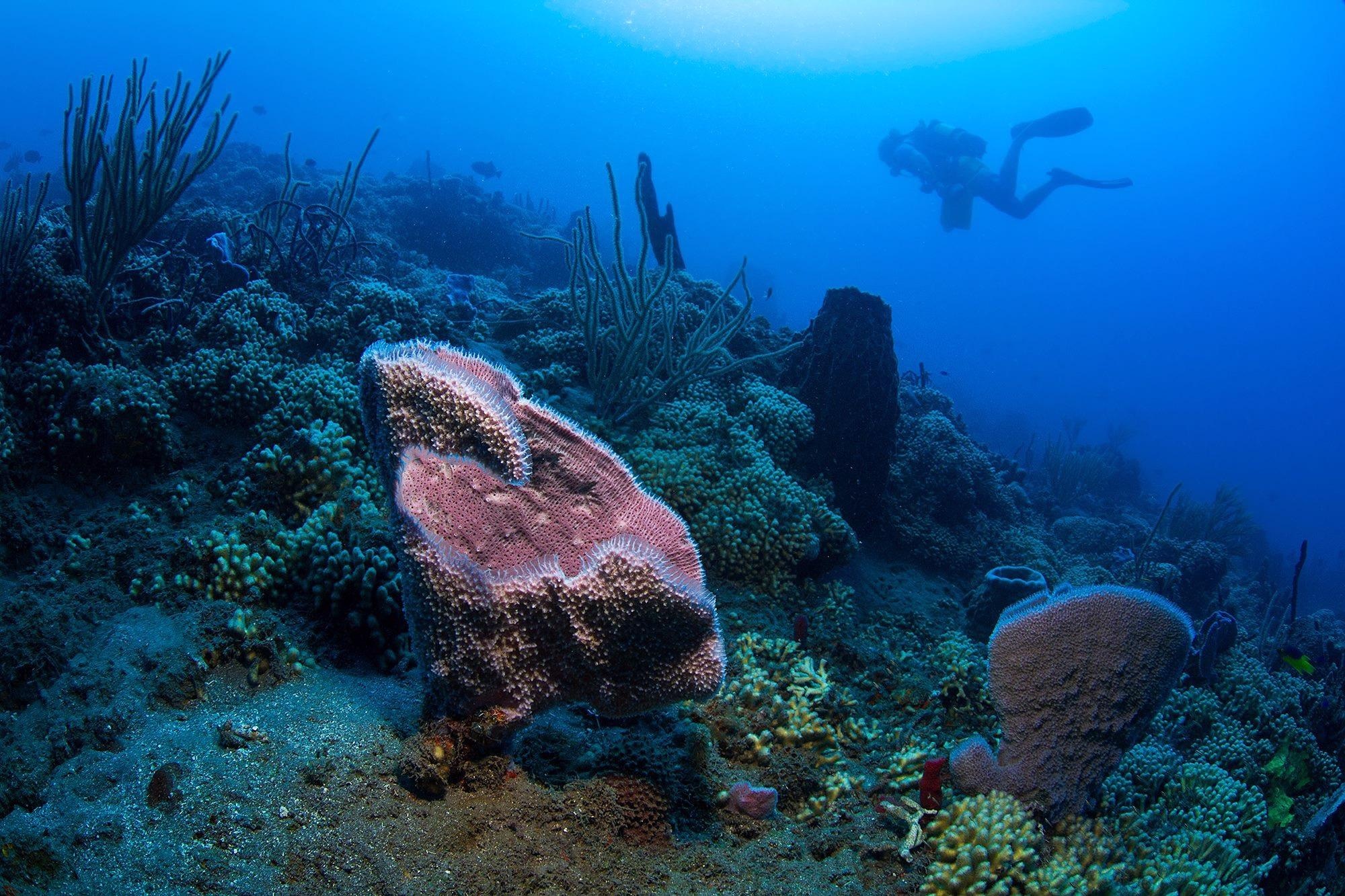As a result of rising global temperatures, vibrant coral reefs crowded with marine life are diminishing across the Caribbean. Coral reefs are habitats that aid the seafood industry, are barriers for coastal communities from storms, flooding and sea-level increase and are known to be great attractions for tourism.
 Coral reefs could face extinction within the next 80 years, or by the end of this century, if atmospheric and ocean temperatures continue to rise at the current pace, according to new research by LSU Department of Oceanography & Coastal Sciences Assistant Professor Dan Holstein. Image Credit: Dan Holstein, LSU
Coral reefs could face extinction within the next 80 years, or by the end of this century, if atmospheric and ocean temperatures continue to rise at the current pace, according to new research by LSU Department of Oceanography & Coastal Sciences Assistant Professor Dan Holstein. Image Credit: Dan Holstein, LSU
Their net economic value throughout the world has been evaluated to be tens of billions of dollars. But if atmospheric and ocean temperatures continue to rise at the present pace, coral reefs will face extinction within the next eight decades, or even by the end of this era.
Entire reefs that I used to dive and snorkel on are gone. There are species you don’t see on the reef anymore. Change is happening now.
Dan Holstein, Assistant Professor, Department of Oceanography & Coastal Sciences, Louisiana State University
Holstein and his collaborators have come up with a new, open-source computational model that is the first to forecast how warming seas will destabilize coral populations across the Western Atlantic. This includes the Bahamas, the Florida Keys, and the Caribbean.
With the help of present projections of ocean warming, the model computes how coral populations will support and thrive, or begin to perish, as ocean temperatures increases.
“This model predicts that ocean warming will reduce the ability for migrating coral larvae to replenish reefs that have bleached and died. The model doesn’t seal the fate of coral reefs, but it is a big wake-up call,” stated Holstein.
The study has been reported in the journal Coral Reefs.
As the ocean tends to warm, it has the potential to destabilize marine ecosystems resulting in imbalances that are similar to temperature and weather extremes faced onshore.
Thermal stress is not the only problem corals face, but it is considered to be the biggest. And how much carbon we put in the atmosphere is something we can decide. We can actually do something about it.
Dan Holstein, Assistant Professor, Department of Oceanography & Coastal Sciences, Louisiana State University
Corals are known as marine animals that depend on a healthy symbiotic relationship with microscopic marine algae to live. The algae live within the coral’s tissue and generate sugars for the coral via photosynthesis.
But when the ocean gets too hot, this symbiotic relationship collapses, resulting in a phenomenon known as coral bleaching, and ultimately the coral could die from starvation.
Holstein’s model analyzes how flexibly connected coral populations are to the forecasted temperature changes across the Caribbean.
“Coral reef connectivity through sexual reproduction and planktonic larvae remains a critical process to track during climate change,” stated co-author Claire Paris, professor at the University of Miami’s Rosenstiel School.
The new model makes use of connectivity information that has been derived from the open-source Connectivity Modeling System developed by Paris.
Despite indicating a dire outcome for coral reefs and specifically for the widespread yet endangered boulder star coral used in the model given the current trajectory, Holstein does not believe coral reef extinction is inevitable.
It is possible for consumers and policymakers to alter how much carbon has been liberated into the atmosphere. Also, countries with the most at stake — those that are the greatest carbon emitters — are required to work collectively to reverse course.
The management of coral reefs and the mitigation of this dire future requires cooperation across borders and spatial scales to manage critical habitat. It’s one of the obvious conclusions. If we fail to do that, all of our effort is at risk of being ineffective.
Dan Holstein, Assistant Professor, Department of Oceanography & Coastal Sciences, Louisiana State University
Journal Reference:
Holstein, D. M., et al. (2022) Predicting coral metapopulation decline in a changing thermal environment. Coral Reefs. doi.org/10.1007/s00338-022-02252-9.